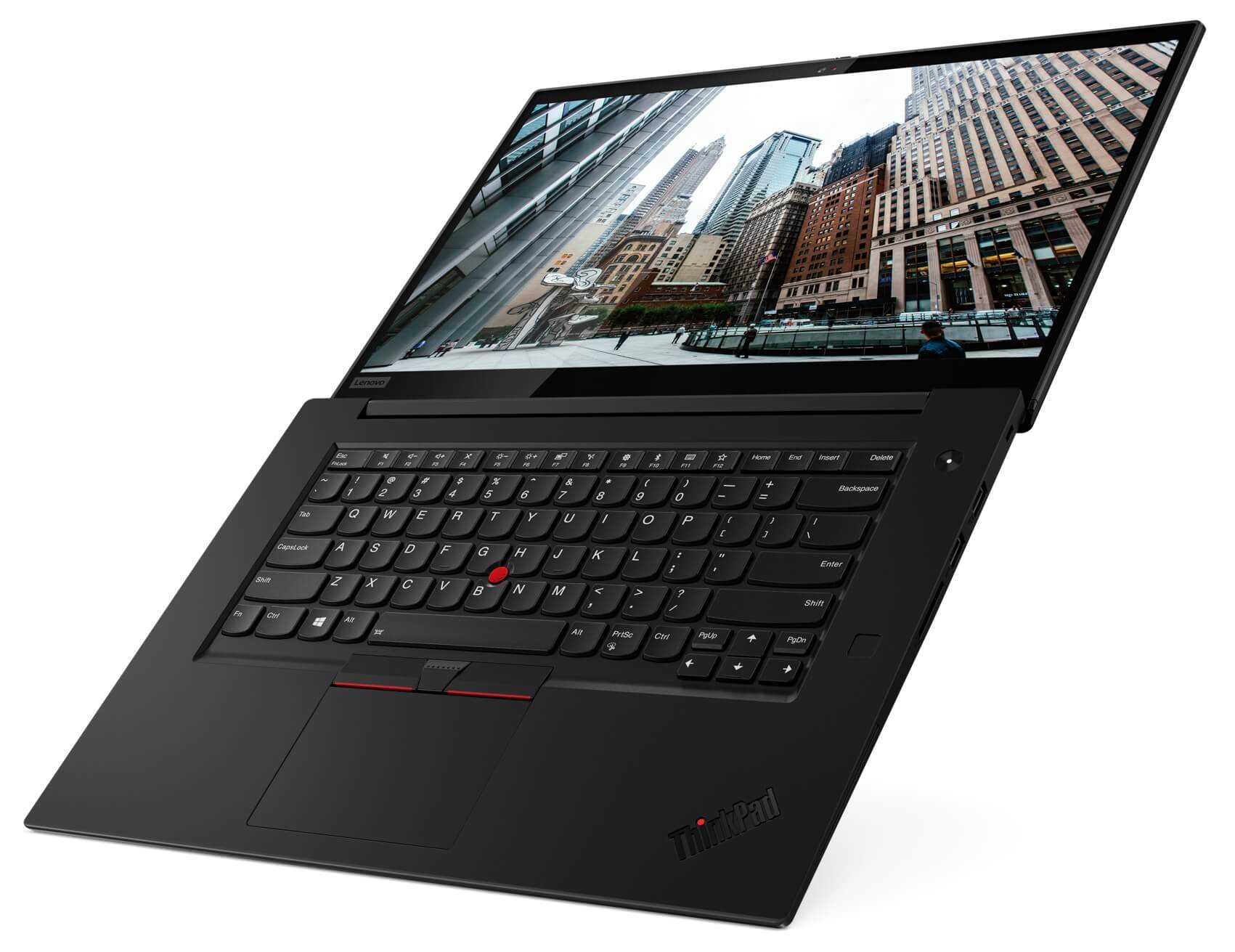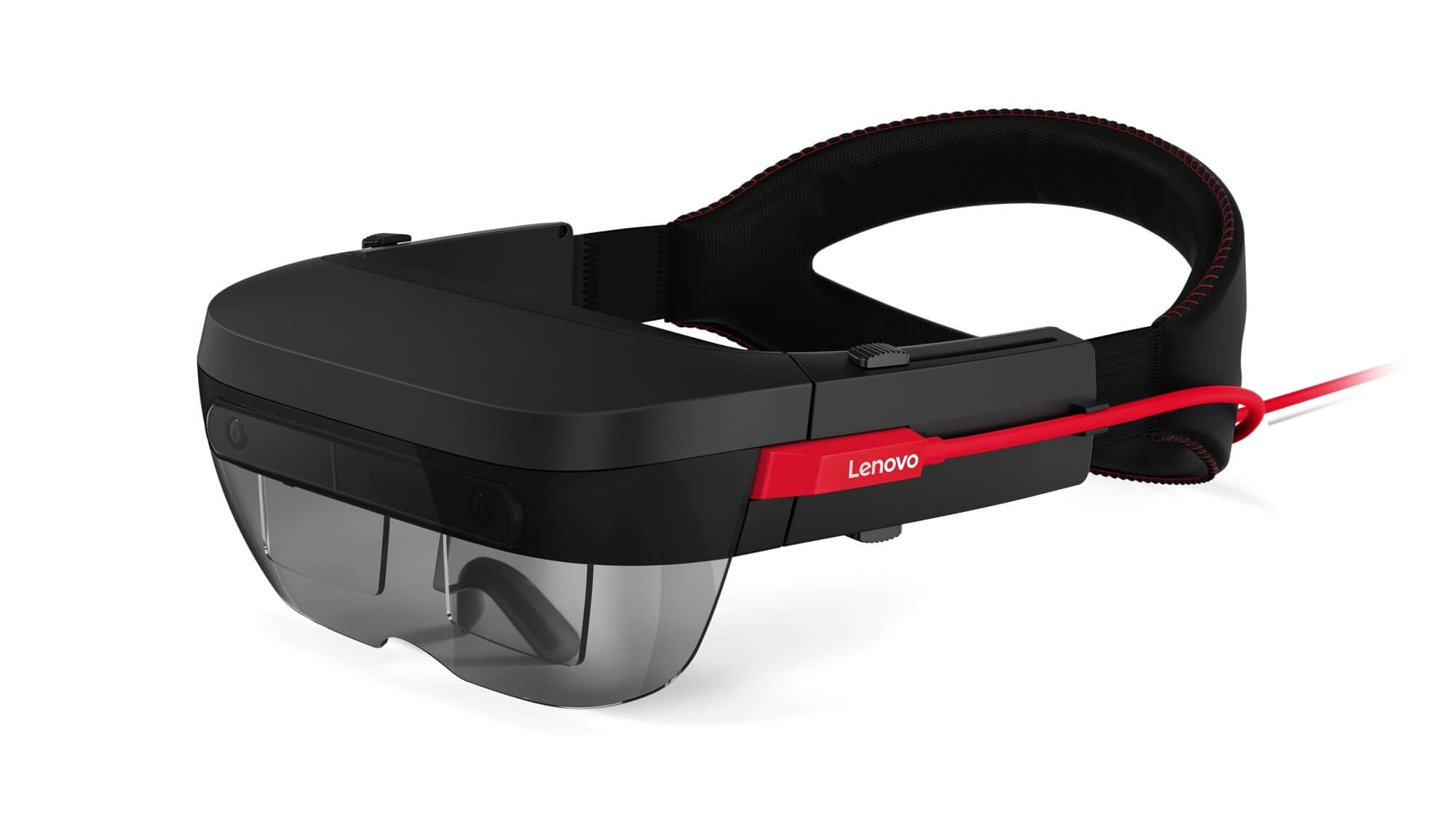Why it matters: Lenovo's annual Accelerate conference kicked off this morning, and they've wasted no time in revealing a slew of new devices; three laptops including a powerhouse designed for intensive workloads, their first enterprise-oriented augmented reality headset, and two tiny PCs built for emerging Internet of Things (IoT) deployment cases. The line-up is surprisingly interesting and indicates Lenovo is exploring new product avenues away from the traditional PC market.
Cutting to the chase, Lenovo's most exciting product on the table is the ThinkPad X1 Extreme Gen 2 (pictured below), landing in July with a starting price of $1,499.99. It's a high-performance 15" laptop with a stealthy business-black finish, up to a Core i9 processor, a GTX 1650 Max-Q, 4TB of SSD storage and 64 GB of RAM. What makes it unique, however, is a 4K HDR OLED screen option and WiFi 6 support, all contained in a slim 18.4 mm, 2.35 lb chassis.
The specs position the X1 Gen 2 close to the flagship Razer Blade, though the X1 is more productivity-focused letting users pick up the OLED screen without investing in RTX GPUs. While Lenovo hasn't revealed the prices of the high-spec'ed models, they won't come cheap - upgrading to OLED on the Razer Blade costs an extra $300, and Lenovo seems to be using the same panel.

Lenovo's two other new laptops are the ThinkBook 14s and ThinkBook 13s, both arriving later this month for $749 and $729, respectively. The idea behind the laptops is to combine the reliability and customer support that businesses want with aesthetics that employees like, and Lenovo seems to have done an adequate job. Both use 8th gen Intel processors, 1080p screens and 45 Whr batteries, and can be configured to have between 4 GB and 16 GB of RAM and up to 512 GB of storage. The ThinkBook 13s base model has an integrated GPU while upgraded models and the ThinkBook 14s have an AMD Radeon 540X with 2GB of GDDR5.

At this year's Accelerate, Lenovo launched a new sub-brand: ThinkReality, which predictably relates to augmented reality. The first product is the A6 (lead image), an enterprise-focused headset that's a cross between Microsoft Hololens and the Magic Leap One. The A6 focuses more on utility and cost-effectiveness than breaking new ground, as it sticks with a Snapdragon 845 CPU and Intel Movidius Visual Processing Unit running Android Oreo to power itself from a little box that users can leave in their pocket.
Like the Magic Leap One, it has a 40° field of view, though the resolution is slightly higher at 1080p (up from 960p) and the rated battery life is better at four hours. Interaction is primarily through gestures, though there is a controller, voice recognition, eye tracking and even object recognition.
The killer feature of the ThinkReality A6 is meant to be the ThinkReality platform, which promises to "reduce repair times, eliminate errors, streamline complex workflows, improve training quality, and save costs," though Lenovo hasn't revealed how. The fate of the A6 rests on its price and software, seeing as neither has been revealed yet.

Last up are the world's "most compact" commercial PCs at about 0.4L, the ThinkCentre M90N-1 Nano IoT starting at $539 and the M90N-1 Nano starting at $639. The IoT version is designed for two things: use in challenging work sites and controlling IoT sensors and devices. As such, the specs (i3, 8 GB of RAM, 512GB SSD) take a back seat to the design, which is fanless, vibration-proof and thermally protected, and the expansion slots and ports, which let users add 4G or 5G support, mount it to a wall or hook up antennas or cables connected to cameras or other sensors for IoT networking.
The non-IoT version takes the same design and reverses it, adding a fan and making it stackable for use in space-limited environments, like call centers. It can also handle higher specs, up to an 8th gen Core i7 processor, 16 GB of RAM and 1 TB of SSD storage. Both versions launch in August.
